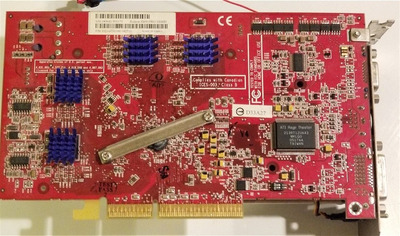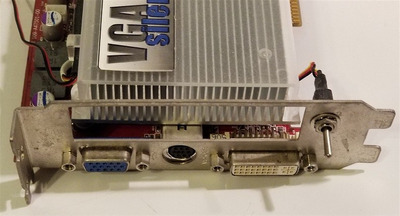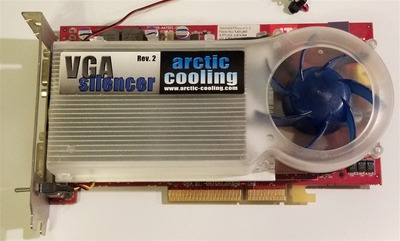shamino wrote on 2024-02-26, 13:21:I was using older hardware so I didn't face that transition until after it was over for most people.
Same here. I've pretty much always been far behind "the curve" on PC hardware.
We had only one PC in the house: a Pentium II 400 MHz, 64 MB of RAM, 20 GB Maxtor HDD, and a S3 Savage 4 w/ 8MB (AGP, obviously). I think we got it late 1999 when Pentium II was a little more affordable. Ran it until around late 2003, when it just became a PITA to do anything on the web. I actually wanted to get/upgrade our PC earlier, but my parents thought it was fine and didn't see a need. I finally convinced them the following year, as I really started to need a good working PC to do my homework on (1st year in high school.) So a family friend helped us pick out some hardware. We got a socket A motherboard (Jetway N2PAP LITE), AMD Duron Applebred (T-bred) 1.4 GHz, 256 MB of RAM, and a Radeon 9200 S(low) E(dition) w/ 64 MB and 64-bit bus. HDD, case, and PSU were re-used from Pentium II PC, because my parents thought we really shouldn't spend too much on a new PC. The primary partition (3.5 GB 🤣, originally with Win 98) was nuked and XP replaced it. The PC was a complete hack box, but it worked (at least for a while 😁 ) and I learned a ton about PCs with the various issues it had. Best of all, despite being such an anemic build, it was able to "run" (I'm using this term loosely here) Half-Life 2 and Counter-Strike Source, so I was pretty happy.
I suppose at this point, PCI-E had already rolled out... though I remember it wasn't until mid-late 2004 / early 2005 that I'd see more and more people on various gaming forums switch to PCI-E. Nevertheless, I kept using the above PC up until late 2006 or so, at which point it started becoming too unstable (PSU blew some caps, though I didn't figure that out until much later.) I asked my parents if I can get a new PC, but they didn't see any reason for it, given that they just gotten a new PC for their office use - a Dell Dimension 3000 with a P4 2.8 GHz Prescott (non-HT), 512 MB of RAM, 80 GB HDD, XP SP2 Home, and onboard video (intel i865 / "EXTREME GRAPHICS 2"... 🤣!) Not having a working computer, I just started using theirs (HA!)... that is, until I got my driving license after high school and started driving around. Enter the beginning of my journey with picking up junk/discarded PCs. 😀
Between 2007-2009, I found several discarded PCs: a Pentium 4 w/ 1.7 GHz Willamate, an HP NetServer E800 (Pentium III 800 Mhz), and a Gateway Select 750 (slot A AMD Athlon @ 750 MHz.) I got cheap used parts for these off of Craigslist and started upgrading them here and there. Then in late 2009, I found another system: an HP Pavilion 8756c with PIII 850 MHz CPU. Even though this late addition was slower than the others (Intel i815 onboard graphics, anyone? Anyone? No? - Yeah, I understand. 😁 ), it became my main PC and I ran it until late 2012 as such. In early 2013, I switched colleges and also happened to run across two Dell Optiplex 170L machines (2.8 GHz P4 HT, 1.25 GB of RAM, 40 GB HDDs, onboard i865 graphics again.) I set one up for myself and gave the other to a family friend of ours that needed a PC at the time. Fast forward to 2024, and I'm still using this Optiplex 170L as a daily driver of sorts. Of course, between then and now, I've gained... oh, around 50 more desktop PCs, many of them a lot newer and better than the 170L.
So where does that leave me in regards to this thread?
I'd like to think somewhere between choices B and D.
One could say I never really got to PCI-E, if judging by my "main" PCs. Of course, that's not really the case. Actually in 2011 or early 2012, I got a motherboard with a PCI-E from a forum buddy... but it was a dead socket 775 motherboard that he thought I could revive. I couldn't at the time. Otherwise, this would surely have become my college PC. So somewhere in late 2013, I purchased a broken/parts MSI motherboard (bad caps, I wanted to fix it for fun.) It had a PCI-E slot. Same year I got a 7600 GS video card that a classmate was going to dispose of due to a failed fan - easy fix for me! When I got home from college, I quickly recapped the MSI board and out the 7600 GS card in it - welcome my first PCI-E system! In 2014, nonetheless. Only 10 years late to the game. 😁 (but better late than never??)
*EDIT*
Oops, I lied / fudged it a little.
Around 2011 or 2012, there was another PC that I picked up that I forgot about: some random custom build with an AsRock 939Dual-SATAII mobo. But I didn't have any PCI-E video cards at the time. Instead, I ran this PC with a reflown Radeon 9700. The reason I forgot about it is because this system was really short-lived. IIt only worked for about 3-4 months before the mobo became too unstable. I put it in the closet for several years and completely forgot about it until much later when I figured some workarounds for the instability. So technically speaking, I think that was my first working mobo with PCI-E, but I just didn't have a PCI-E GPU to use with it at the time.
Anyways, I'm sure the above wall of text / details are not important to anyone. But at this point, I'm just trying to recall what PC came when for my own sanity (if we can call it that, given the # of systems I've hoarded at this point, 🤣!)




